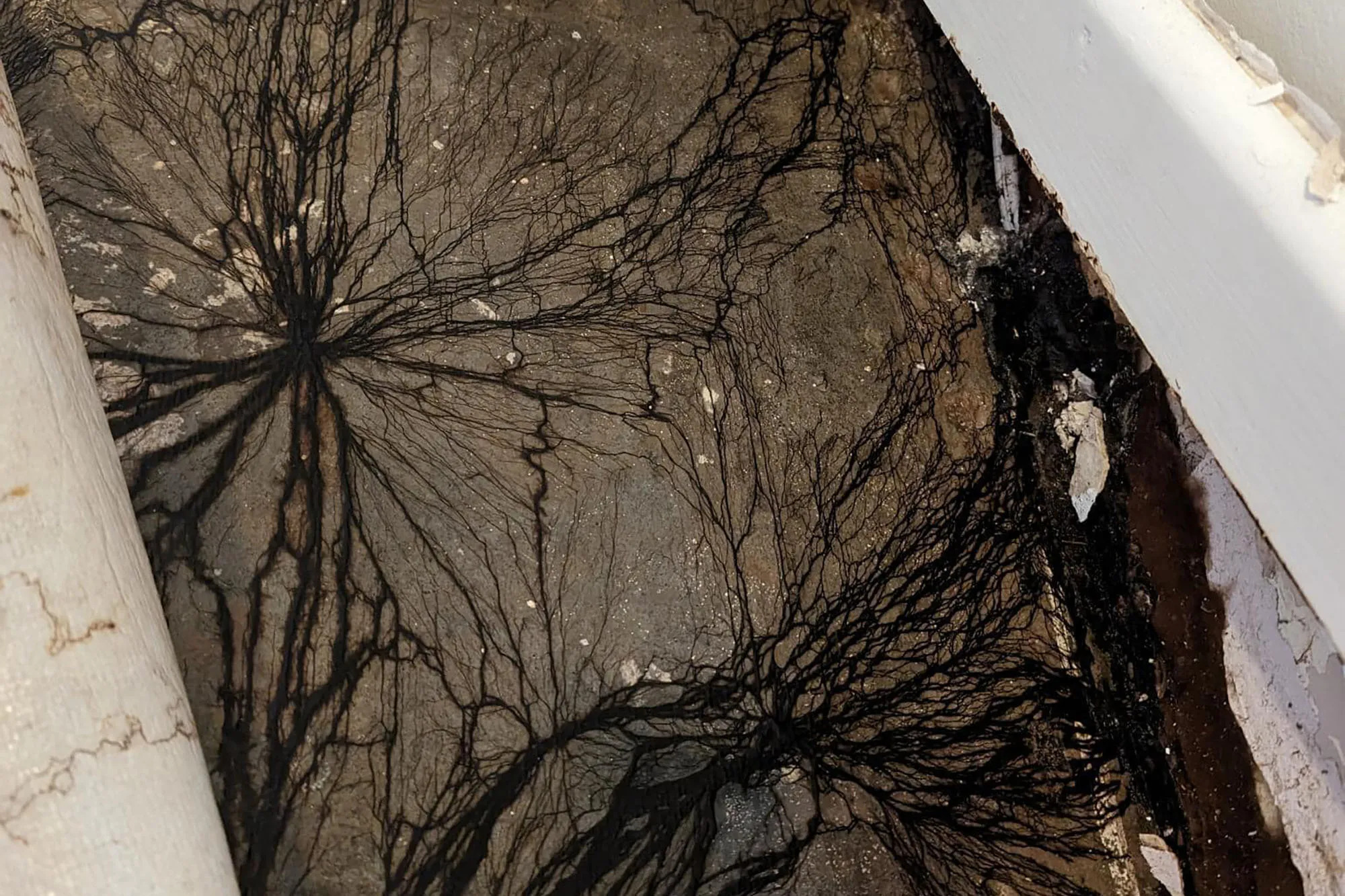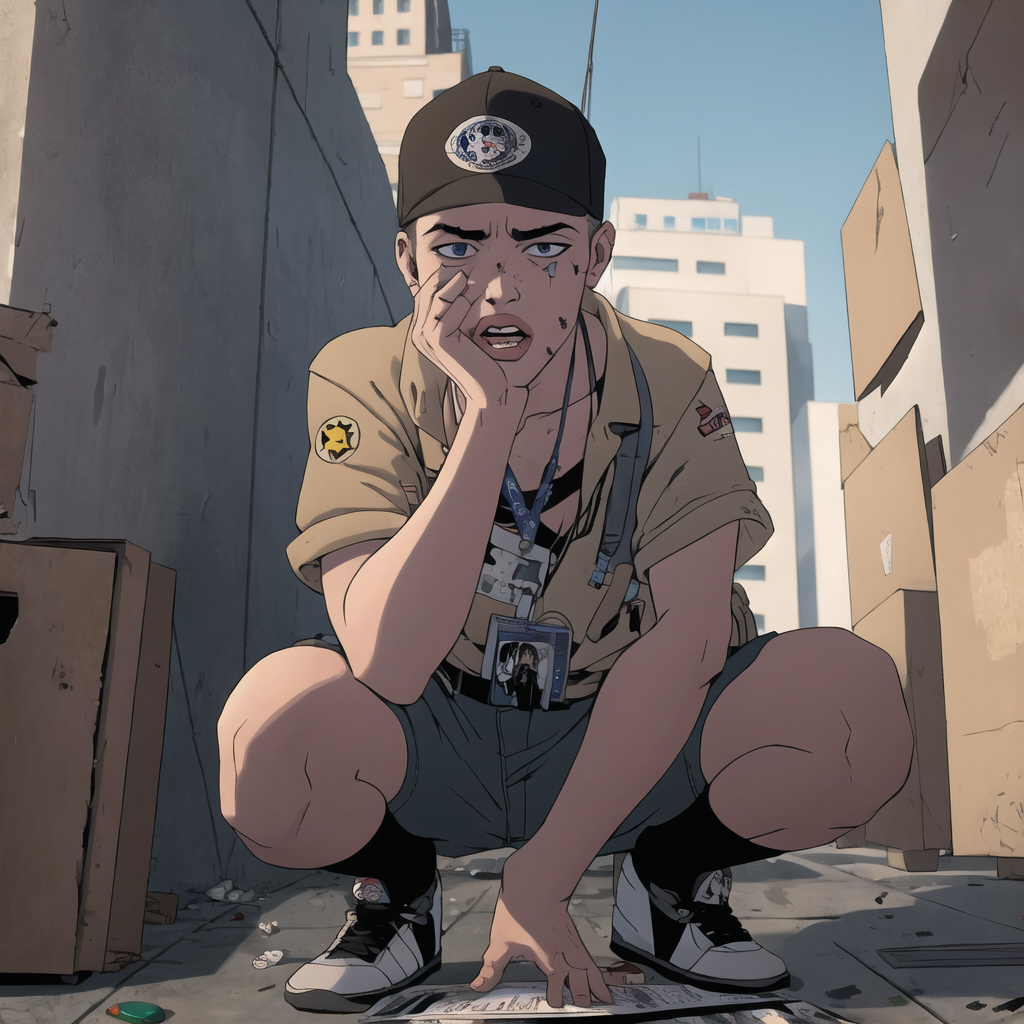Shocking Black Growth Found Under Floorboards Scares Many People
Discover the story of the shocking black growth found under floorboards in a Melbourne home, sparking intrigue and fear among homeowners and experts alike. Uncover this bizarre and mysterious phenomenon.
Author:Raven NoirReviewer:Morgan MaverickNov 14, 20232.2K Shares73.4K Views

In a recent and startling discovery, a Melbourne homeowner, Hannah Sycamore, discovered a shocking black growth found under floorboardsof her home, sparking both fear and curiosity among netizens and experts alike. This unusual find, reminiscent of scenes from the popular TV series "Stranger Things," has raised questions and concerns about its nature and potential impact.
A Strange Discovery in Australia
Australia is known for its exotic and often intimidating wildlife, from venomous spiders to snakes and the infamous blue-ringed octopus. However, Sycamore's discovery presents a different kind of Australian oddity. After noticing that her floorboards were wet and required removal, she found something peculiar thriving in the damp environment beneath. Eager to understand what it was, Sycamore took to the Australia & New Zealand Fungus Identification Facebook group, a community usually preoccupied with identifying mushrooms and similar organisms.
The images she uploaded immediately stood out amidst the usual posts on the page. The black, vein-like growth drew a mix of reactions from group members, ranging from humor to horror. References to "Stranger Things" were abundant, with one member commenting, "The veins of 'nooope'." Another expressed their fear more directly, stating, "I'm genuinely terrified," while a third quipped, "You’ve opened the upside down."
Despite the initial shock and references to pop culture, some group members offered more scientific perspectives on the matter. Suggestions about the nature of the growth varied, with one member proposing it could be slime mold, while others thought it might be tree roots.
The group's moderator, delving into a more detailed analysis, suggested, "These look like the bootlace rhizomorphs of Armillaria." They further speculated about the possible presence of trees outside Sycamore's house, indicating that the "melanised hyphae" might have spread along the roots beneath the house and up into its structure. The moderator's advice underscored the need for a professional assessment, recommending, "It’s probably something you need to get a structural engineer to look at."
Expert Insights on the Unusual Growth
Dr. Patricia Kaishian, the Curator of Mycology at the New York State Museum, provided an expert opinion on the matter, emphasizing the challenges of making a definitive identification based solely on photographs.
She told The New York Post, “Without examining the fungus in person (looking at it microscopically and looking for other signatures in the structure) I can’t be 100% sure.” Dr. Kaishian hypothesized that the growth could be the mycelium of a 'wet rot' fungus known as Coniophora puteana, also referred to as 'cellar rot' or 'kellerschwam' in German. “This would be my guess, going off these photos alone,” she added.
Conclusion
The discovery of this peculiar growth beneath the floorboards of a Melbourne home has not only highlighted the diverse and often unexpected natural phenomena in Australia but also underscored the importance of scientific inquiry in understanding such occurrences.
While the initial reactions ranged from fear to fascination, the insights from experts and enthusiasts alike have opened a window into the mysterious world of fungi and their interactions with human habitats. As investigations continue, the true nature of this strange growth awaits a more thorough and scientific analysis.

Raven Noir
Author
Raven Noir is a captivating and enigmatic news reporter who unravels mysteries with a relentless pursuit of truth. Possessing an insatiable curiosity and an astute mind, Raven delves into the depths of complex stories, unearthing secrets that lie beneath the surface. With a masterful grasp of deduction and observation, Raven stands as a beacon of fearless investigation.
In the realm of journalism, Raven is known for his enigmatic presence, drawing people in with an aura of intrigue. Driven by an unwavering passion for unveiling the truth, Raven Noir continues to shed light on the darkest corners of society. Through captivating storytelling and unwavering determination, he challenges conventions and uncovers enigmatic secrets that lie just beyond the surface.

Morgan Maverick
Reviewer
Morgan Maverick is an unorthodox news reporter driven by an insatiable hunger for the truth. Fearless and unconventional, he uncovers hidden narratives that lie beneath the surface, transforming each news piece into a masterpiece of gritty authenticity. With a dedication that goes beyond the boundaries of conventional journalism, Morgan fearlessly explores the fringes of society, giving voice to the marginalized and shedding light on the darkest corners.
His raw and unfiltered reporting style challenges established norms, capturing the essence of humanity in its rawest form. Morgan Maverick stands as a beacon of truth, fearlessly pushing boundaries and inspiring others to question, dig deeper, and recognize the transformative power of journalism.
Latest Articles
Popular Articles